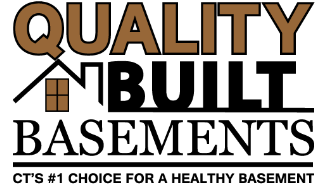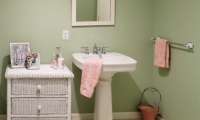Moisture in a basement can the atmosphere cold and uncomfortable and give it an unpleasant smell. An even more problematic issue if the danger posed by the presence of moisture. It creates the environment for the growth of mold, which can lead to health issues. The problem can be difficult to tackle as there are two sources of moisture intrusion. Water can seep into the basement from the outside. This can be rainwater, melting snow, or even groundwater once the soil has become saturated. The other source is humidity inside the basement. When moisture condenses on surfaces in the basement, it will remain damp unless you take steps to dry it out. These steps include:
- Keep water away from the foundation. It is common for water runoff to settle around the foundation and eventually seep into the basement. Over the years this can worsen due to settling soil. Create a slope around the foundation to move the water away from it.
- Use a gutter system. If your home has no gutters it is time to get them installed. If you have gutters, the downspouts may not be doing an adequate job of moving water away from the foundation. Adding downspout extensions should correct this problem right away. The end of the downspout should be at least four feet for effective water runoff. Regular gutter cleaning is another important step in helping the system to keep water away from the foundation.
- Get rid of humidity. If there is a bathroom in the basement, a vent fan is essential for helping to dry it out. Check dryer vents for leaks which can increase levels of humid air. A dehumidifier will do a lot to minimize condensation on surfaces in the basement and keep the space dry.
- Use wall insulation. Effective insulation of basement walls will keep the basement dry while making it comfortable and lowering your heating costs. Before installing wall insulation, make sure that you address any foundation leaks or exterior sources of water intrusion. Otherwise the area behind the insulation will remain damp. If mold starts to grow, you may not realize until it has become severe.
- Cover pipes. The pipes are a common source of moisture in the basement, so start by covering them with insulation. You can buy pipe insulation for this purpose and do the job yourself.
Make sure that your foundation has no leaks before you start any type of basement conversion. Patch holes, and use a waterproof sealant to keep moisture from seeping in. These steps are inexpensive, and will not take much time. Without them, you could face costly mold removal later on. Call us at 860-667-8105 if you would like to start the design process for your new basement or to schedule an appointment for a consultation.






